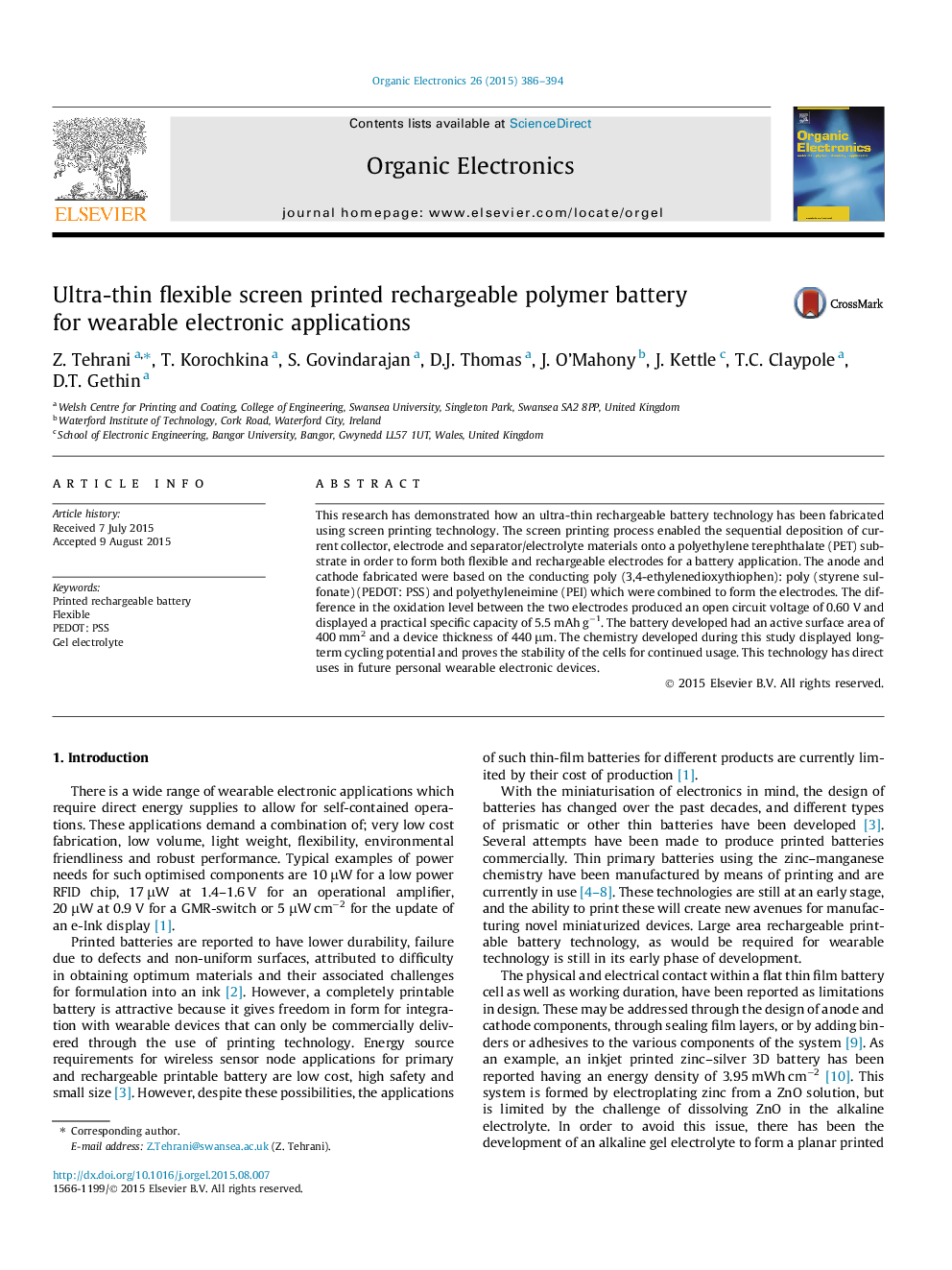| Article ID | Journal | Published Year | Pages | File Type |
|---|---|---|---|---|
| 7701596 | Organic Electronics | 2015 | 9 Pages |
Abstract
This research has demonstrated how an ultra-thin rechargeable battery technology has been fabricated using screen printing technology. The screen printing process enabled the sequential deposition of current collector, electrode and separator/electrolyte materials onto a polyethylene terephthalate (PET) substrate in order to form both flexible and rechargeable electrodes for a battery application. The anode and cathode fabricated were based on the conducting poly (3,4-ethylenedioxythiophen): poly (styrene sulfonate) (PEDOT: PSS) and polyethyleneimine (PEI) which were combined to form the electrodes. The difference in the oxidation level between the two electrodes produced an open circuit voltage of 0.60 V and displayed a practical specific capacity of 5.5 mAh gâ1. The battery developed had an active surface area of 400 mm2 and a device thickness of 440 μm. The chemistry developed during this study displayed long-term cycling potential and proves the stability of the cells for continued usage. This technology has direct uses in future personal wearable electronic devices.
Keywords
Related Topics
Physical Sciences and Engineering
Chemistry
Chemistry (General)
Authors
Z. Tehrani, T. Korochkina, S. Govindarajan, D.J. Thomas, J. O'Mahony, J. Kettle, T.C. Claypole, D.T. Gethin,
